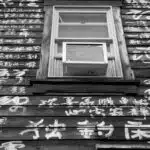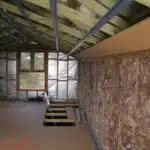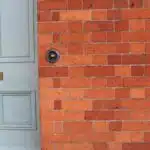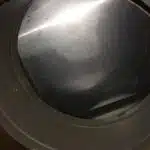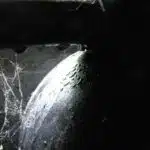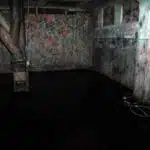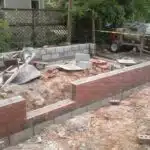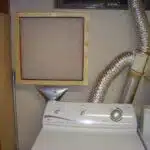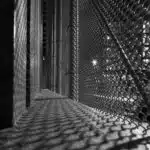As a building materials expert, choosing the right house wrap for your project is crucial. The purpose of house wrap is to protect buildings from the elements, such as wind and water, while also allowing moisture to escape. With so many options available in the market, it can be overwhelming to choose the right one that suits your needs.
When selecting a house wrap, it is important to consider factors such as durability, water resistance, and breathability. A high-quality house wrap can significantly improve energy efficiency and reduce maintenance costs over time. In this article, we will explore how to choose the best house wrap for your project based on its performance characteristics and overall value. By understanding the benefits and limitations of different types of house wraps, you can make an informed decision that serves both your clients and their homes for years to come.
Understanding The Purpose Of House Wrap
According to a study by the National Association of Home Builders, up to 90% of new homes are built using house wrap. The popularity of this building material has increased due to its ability to improve energy efficiency, reduce air infiltration, and protect against moisture damage. House wraps are installed on the exterior walls before siding installation, acting as a barrier that keeps unwanted moisture from penetrating the wall system.
When considering which house wrap to use, it is important to understand its purpose. Installation techniques vary depending on the type of house wrap material. For example, some require staples or nails while others use adhesive tapes. Additionally, cost comparison is also a factor when choosing between different types of house wraps. While traditional asphalt felt paper is a budget-friendly option, newer synthetic materials can offer superior performance with only a slightly higher price tag.
Choosing the right house wrap for your specific project requires careful consideration of both factors. It is important to note that improper installation can lead to compromised performance regardless of the material used. Therefore, hiring a professional installer or following manufacturer guidelines closely during DIY installations is crucial for optimal results. In the next section, we will discuss different types of house wrap materials and their unique features and benefits for various applications.
Types Of House Wrap Materials
Understanding the Purpose of House Wrap is crucial before deciding on the type of house wrap to use. House wrap acts as a barrier that protects the building from moisture and air infiltration. Choosing the right kind of house wrap material is essential for its effectiveness.
There are different types of house wrap materials available in the market, each with its pros and cons. Some popular materials include asphalt felt paper, plastic film, and synthetic fabrics. The installation methods vary depending on the material used. For instance, asphalt felt paper requires stapling while plastic film requires taping or gluing. Synthetic fabrics can be mechanically fastened or adhered to using adhesives.
Cost comparison is another factor to consider when choosing house wrap. While some materials may have a higher initial cost, they may save money in the long run by reducing energy costs and increasing durability. It’s essential to weigh the benefits against expected costs before making a final decision.
Factors to consider when choosing house wrap include climate, building design, code requirements, and personal preferences. Choosing a reputable supplier or manufacturer is also essential for getting quality products and services. Ultimately, selecting the right type of house wrap will help protect your building from external elements while improving indoor comfort levels and energy efficiency.
Factors To Consider When Choosing House Wrap
When choosing house wrap, it is important to consider the vapor permeability of the product. This will ensure that moisture is able to escape the building envelope, preventing moisture buildup and promoting energy efficiency. Additionally, the installation process should be taken into account, as it will affect the overall performance of the house wrap. The durability of the product should also be considered, as it will affect how long the house wrap will last. It is important to select a house wrap that is designed to resist damage from ultraviolet rays and moisture as well as temperature extremes. Finally, the cost and availability of the house wrap should be considered to ensure that the project remains within budget.
Vapor Permeability
When it comes to selecting a house wrap, there are several factors that need to be taken into consideration. One of the most crucial factors is vapor permeability. In simple terms, vapor permeability refers to the ability of the material to allow moisture vapor to move through it.
A common mistake that homeowners make is assuming that all house wraps are designed to act as a vapor barrier. However, this is not always the case. Some wraps offer excellent moisture control while allowing for the movement of air and moisture vapors through them. This ensures that any trapped moisture can escape from behind the wrap without causing any damage or mold growth.
The key takeaway here is that when choosing a house wrap, you need to ensure that it offers the right level of vapor permeability based on your location and climate. This will ensure that your home remains well-ventilated and free from moisture-related issues in the long run. Therefore, it’s important to conduct ample research before making a final decision on which house wrap to choose for your home.
Installation
When it comes to selecting a house wrap, homeowners need to consider various factors. Vapor permeability is one crucial aspect that needs attention, but the installation process also needs to be considered. The proper installation of the house wrap can help ensure that it functions correctly and provides optimal protection for the home. Therefore, homeowners must follow specific installation tips to guarantee that their chosen house wrap performs well in the long run.
Before beginning any installation, it’s important to assess the cost analysis of the project. Homeowners need to factor in the cost of materials and labor when choosing a house wrap. It’s essential to note that some types of wraps are more expensive than others due to their unique features and benefits. However, investing in a high-quality wrap can provide long-term savings by reducing energy costs and preventing moisture damage.
When installing the house wrap, it’s crucial to follow manufacturer instructions carefully. This includes ensuring proper overlap between each piece and sealing all seams with tape or adhesive. Any gaps or tears in the wrap should be repaired immediately before continuing with further installation. Additionally, it’s vital to take special precautions around windows and doors where water intrusion is more likely to occur. Following these installation tips can ensure that your home is protected from moisture-related issues for years to come.
Durability
When it comes to selecting a house wrap, durability is another crucial factor that homeowners need to consider. A durable house wrap can provide long-lasting protection against moisture and air infiltration while reducing energy costs. Therefore, homeowners must choose a wrap that can withstand harsh weather conditions and protect their homes for years to come.
When assessing the durability of a house wrap, it’s essential to consider its resistance to tearing, puncturing, and UV rays. A high-quality wrap should be able to resist these damages, which can compromise its effectiveness over time. Moreover, the installation process is critical in ensuring its longevity. A properly installed house wrap with adequate overlap and sealing can prevent water intrusion and reduce the risk of damage.
To enhance the durability of the house wrap, homeowners must follow specific installation tips. For example, they should avoid leaving gaps or tears in the wrap during installation and repair them immediately if they occur. Additionally, using compatible tape or adhesive when sealing seams can improve the strength of the house wrap and prevent air leakage. These simple steps can help ensure that your chosen house wrap performs well in the long run while maintaining cost-effectiveness.
In conclusion, choosing a durable house wrap is essential for protecting your home from moisture-related issues while reducing energy costs. By considering factors such as resistance to tearing and puncturing as well as proper installation techniques like sealing seams with compatible tape or adhesives, homeowners can ensure that their chosen house wrap provides optimal protection for their homes for years to come without sacrificing cost-effectiveness.
Durability Of House Wrap Materials
When it comes to house wrap, durability is a crucial factor to consider. A high-quality house wrap can provide long term performance and reduce the need for costly repairs. The material lifespan of the house wrap should be taken into account when making a decision.
There are several factors that contribute to the durability of house wrap materials. Here are four key considerations:
- Thickness: Thicker materials tend to be more durable.
- Tear resistance: House wraps with high tear resistance can withstand strong winds and other harsh weather conditions.
- UV resistance: Exposure to sunlight can cause some materials to degrade over time, so UV-resistant house wraps are particularly important in sunny climates.
- Permeability: While a breathable house wrap is important for preventing moisture buildup, too much permeability can lead to decreased durability.
As a building materials expert, I recommend choosing a high-quality house wrap with a long material lifespan. By considering factors such as thickness, tear resistance, UV resistance, and permeability, you can ensure that your chosen house wrap will provide long-lasting protection for your home. In the subsequent section, we’ll dive deeper into another essential aspect of choosing a quality house wrap: water resistance.
Water Resistance Of House Wrap
When it comes to choosing house wrap, one important factor to consider is its water resistance. House wrap serves as a protective barrier against moisture intrusion, which can cause damage to the structural integrity of a building and lead to mold growth. Therefore, selecting a house wrap with good water resistance is crucial for ensuring the longevity and safety of a structure.
To determine the water resistance of a house wrap, various tests are conducted in laboratory settings. These tests evaluate the ability of the material to resist water penetration under different conditions, such as wind-driven rain and static water pressure. The results are then used to assign a rating to the product, which can help builders and contractors make informed decisions when choosing among different options.
It is important to note that even if a house wrap has high ratings for water resistance, proper installation is still crucial for achieving optimal performance. Poor installation practices can compromise the effectiveness of the material and lead to potential issues down the line. Furthermore, weather conditions can also impact how well a house wrap performs in terms of water resistance. Severe storms or prolonged exposure to harsh elements can challenge even the most durable materials. Therefore, it is important for builders and contractors to take these factors into consideration when selecting and installing house wrap on their projects.
| House Wrap | Water Resistance Rating | Manufacturer |
|---|---|---|
| Brand A | 9 out of 10 | ABC Building Supplies |
| Brand B | 8 out of 10 | XYZ Construction Materials |
| Brand C | 7 out of 10 | LMN Builders’ Warehouse |
In conclusion,
The importance of selecting house wrap with good water resistance cannot be overstated. Not only does it protect against moisture intrusion that can damage buildings over time; it also helps prevent mold growth that can compromise indoor air quality and pose health risks to occupants. However, proper installation practices are equally vital for ensuring optimal performance, regardless of how high a product’s ratings may be. Additionally, weather conditions can also impact the material’s effectiveness, so builders and contractors must remain vigilant about monitoring and maintaining their house wrap over time. In the subsequent section, we will discuss the breathability of house wrap and its role in promoting energy efficiency in buildings.
Breathability Of House Wrap
- Breathability is an important factor when considering house wrap, as it determines the efficiency with which the material exchanges moisture vapor.
- There are two types of breathability, liquid water and water vapor permeability, both of which are important when selecting an appropriate house wrap.
- Breathability offers a number of benefits, including increased durability, improved energy efficiency, and better protection against mold and mildew.
- When evaluating the breathability of house wrap, vapor permeability should be considered, as this will determine the rate of water vapor transmission through the material.
- Several factors influence vapor permeability, such as the thickness of the material, the number of layers, and the type of film used.
- It is important to select a house wrap that is both breathable and vapor permeable in order to ensure optimal performance.
Types Of Breathability
Choosing the right house wrap is crucial to ensuring that your building remains dry and protected from moisture damage. One of the key factors to consider when selecting a house wrap is its breathability. Breathability ratings refer to how well the material allows water vapor to pass through it while still preventing liquid water from entering. Different types of breathability exist, and each has its own advantages and disadvantages.
The first type of breathability is known as microporous or permeable house wrap. This type of house wrap features small pores that allow air and water vapor to pass through while blocking liquid water. Microporous house wraps are excellent for moisture management, as they allow trapped moisture to escape, preventing mold growth and structural damage over time. However, this type of house wrap can be more expensive than other options on the market.
Another option for breathability is non-permeable house wrap, which does not allow any air or water vapor to pass through it. Instead, this type of house wrap relies on an outer drainage plane to wick away any trapped moisture. Non-permeable house wraps are generally less expensive than their microporous counterparts but may be less effective in extreme weather conditions such as high humidity or heavy rainfalls.
In conclusion, choosing the right house wrap can mean the difference between a dry and healthy building versus one plagued by mold and rotting wood. When considering which type of breathability rating is best suited for your project, take into account your climate zone, budget restrictions, and overall moisture management needs. With careful research and consideration, you’ll be able to select the best possible option for your building’s long-term health and protection.
Benefits Of Breathability
Now that we have discussed the different types of breathability ratings for house wraps, let us dive into the benefits of choosing a breathable option. The importance of ventilation and moisture management techniques when constructing a building cannot be overstated. With a permeable or microporous house wrap, trapped moisture can escape from the walls, preventing mold and mildew growth. This not only helps to maintain the structural integrity of the building but also creates a healthier living environment for its occupants.
In addition to improving indoor air quality, breathable house wraps can also help with energy efficiency. When air is allowed to circulate through the walls and attic, it helps to regulate temperature and reduce heating or cooling costs. Non-permeable house wraps may be less expensive upfront but can cause long-term problems if moisture becomes trapped within the walls, leading to costly repairs and increased energy bills.
Overall, choosing a breathable house wrap is an investment in both the longevity and health of your building. By allowing moisture to escape while still protecting against liquid water intrusion, these materials provide an extra layer of defense against potential damage. It is crucial to consider all factors when selecting a house wrap – including breathability rating – in order to ensure that your building remains protected for years to come.
Vapor Permeability Factors
The breathability of house wrap is a crucial factor to consider when constructing a building. As mentioned earlier, it plays a significant role in preventing moisture from becoming trapped within the walls, which could lead to mold growth and other problems. Vapor permeability is one of the factors that determine how breathable a house wrap material is. It refers to the rate at which water vapor can pass through the material.
Installation techniques also affect the vapor permeability of a house wrap. Proper installation ensures that there are no gaps or seams where air can leak through, reducing its effectiveness. Moisture management is another critical aspect to consider when selecting a breathable house wrap. If moisture accumulates within the wall cavity due to poor ventilation or insulation, it can compromise the integrity of the structure and pose health risks to occupants.
In conclusion, selecting a breathable house wrap that has high vapor permeability ratings is essential for maintaining healthy indoor air quality and energy efficiency in your building. Proper installation techniques and moisture management should also be considered as they play significant roles in ensuring long-term protection against potential damage and costly repairs. Ultimately, investing in high-quality materials and proper installation techniques will provide peace of mind knowing that your building is well-protected for years to come.
Energy Efficiency Benefits Of House Wrap
Like a shield protecting a castle from its enemies, house wrap serves as the first defense line against external factors that can harm the house. However, it is not just any kind of shield. When installed correctly, it can provide energy efficiency benefits that are crucial in reducing energy costs and enhancing indoor comfort.
Installation techniques play a significant role in achieving maximum energy efficiency benefits of house wrap. To ensure proper installation, the installer must follow the manufacturer’s instructions to the letter. The house wrap should be overlapped correctly, taped tightly at joints, and fastened securely to avoid any gaps or punctures. These little details matter because even small gaps or holes can allow air infiltration that can compromise the energy efficiency of the entire house.
Cost comparison is also an essential factor when choosing house wrap. While some may find it expensive compared to traditional methods such as felt paper or tar paper, investing in high-quality house wrap will save you more money in the long run due to its superior performance. House wrap is designed to last longer than other alternatives and requires less maintenance, making it more cost-effective and efficient for homeowners who want to achieve optimal energy efficiency benefits for their homes.
As we have seen, proper installation techniques and cost comparison are crucial factors when choosing house wrap for optimal energy efficiency benefits. But what about maintenance? In the subsequent section, we will delve into how maintaining your house wrap can prolong its effectiveness and ensure that your investment continues to pay off over time.
Maintenance Benefits Of House Wrap
House wrap is a crucial element of any home’s construction, providing protection against moisture and air infiltration. The advantages of using house wrap include increased energy efficiency, improved indoor air quality, and enhanced durability of the building envelope. By preventing water from entering the walls, house wrap helps to prevent mold growth and structural damage.
Proper installation techniques are essential to ensure that house wrap performs as intended. It is important to use the correct type of fasteners and tape to seal all seams and penetrations properly. Additionally, care should be taken to avoid tearing or puncturing the material during installation.
Overall, investing in high-quality house wrap can provide significant long-term benefits for homeowners. By protecting against moisture infiltration and improving energy efficiency, it can help to reduce maintenance costs and extend the lifespan of a home’s exterior. In the next section, we will compare woven vs. non-woven house wraps to help you choose the best option for your specific needs.
Comparing Woven Vs. Non-Woven House Wrap
Durability is an important factor when comparing woven vs. non-woven house wrap, as woven house wrap is typically thicker and more resistant to tearing.
Breathability is another key factor to consider, as woven house wrap is more breathable, allowing water vapor to escape, while non-woven house wrap is more airtight.
Cost is also a significant factor when choosing between the two materials, as woven house wrap is typically more expensive than non-woven house wrap.
Installation time should also be taken into account when comparing woven vs. non-woven house wrap, as woven house wrap can take longer to install due to its thicker nature.
Durability
When choosing between woven and non-woven house wrap, durability is a crucial factor to consider. Both types of house wrap have installation methods that are easy to follow, but the longevity factors differ significantly. In terms of durability, woven house wrap is more reliable than non-woven house wrap.
Woven house wraps are constructed with tightly interlaced strands of polypropylene or other synthetic materials, which make them strong and durable. These wraps are more resistant to damage caused by wind, UV rays, and moisture compared to their non-woven counterparts. Moreover, woven wraps have better tear resistance properties that ensure they remain intact during installation and subsequent construction activities. Additionally, woven wraps can last for up to 10 years when installed correctly.
On the other hand, non-woven house wraps are made from polyethylene or polyester fibers that are bonded together using heat or chemicals. Although these wraps are lightweight and easier to handle during installation than woven wraps, they tend to be less durable in the long run since they can easily tear if not handled properly during installation. Additionally, non-woven wraps have a shorter lifespan of up to five years.
In conclusion, when selecting a house wrap for your building project, it’s essential to take into account factors such as durability. Woven house wrap is a better option since it offers more extended protection against external elements such as moisture and UV rays while maintaining its structural integrity over time. Non-woven wraps may be cost-effective in the short term but may require frequent replacement due to their lower tear resistance properties.
Breathability
Another critical factor to consider when selecting a house wrap for your building project is breathability. Both woven and non-woven house wraps have different breathability levels, which influence their ability to manage moisture and control air flow. Moisture management is crucial in preventing the growth of mold and mildew, which can cause structural damage over time. On the other hand, air flow control helps regulate temperature and prevent energy loss.
Woven house wraps tend to be more breathable than non-woven wraps due to their tightly interlaced strands that allow for better air movement. This feature also enables them to manage moisture efficiently by allowing water vapor to escape while preventing liquid water from penetrating through the wrap. Furthermore, woven wraps are more effective in controlling air flow since they create a tighter barrier against outside elements.
Non-woven house wraps have less breathability compared to their woven counterparts due to their fiber bonding process that limits air movement. However, this type of wrap still offers some level of moisture management and air flow control but may require additional measures such as venting or insulation to achieve optimal results. Overall, it’s essential to evaluate your building needs carefully and choose a suitable house wrap that balances durability with breathability for long-lasting protection.
Insulated House Wrap Options
According to the Energy Star program, home insulation can save homeowners up to 15% on heating and cooling costs. One of the most efficient ways to insulate a home is through the use of insulated house wrap. This type of house wrap combines traditional weather-resistant barriers with additional layers of insulation that help keep homes at a comfortable temperature year-round.
When choosing an insulated house wrap, it’s important to consider installation techniques and cost comparisons. Some types of insulated house wraps require professional installation, while others can be easily installed by homeowners. Additionally, some brands may come with a higher upfront cost but could potentially save money in the long run by reducing energy bills.
Overall, it’s important to carefully evaluate all options before selecting an insulated house wrap for your home. By considering installation techniques and cost comparisons, you can make an informed decision that will provide long-term benefits for your family and home. In the next section, we’ll discuss environmental considerations for choosing a house wrap that not only benefits your household but also the planet as a whole.
Environmental Considerations For House Wrap
- Recycled material is an important consideration when selecting a house wrap, as it can reduce the overall environmental impact of a building project.
- Volatile organic compounds (VOCs) emitted by certain house wraps can negatively impact indoor air quality, so choosing a product with low VOCs is essential.
- The chosen house wrap should also have a good moisture barrier to ensure the building envelope is protected from the elements.
- Using sustainable or renewable materials for house wrap can help minimize waste, conserve resources, and reduce the overall environmental footprint of the project.
- House wraps made from recycled materials may require additional maintenance over time, so the cost of ownership should be weighed against the sustainability benefits.
- The life-cycle costs of a house wrap should be considered, including energy use for production, transportation, and installation, as well as the potential for reuse or recycling at the end of its useful life.
Recycled Material
Recycled materials have become an increasingly popular option for house wrap due to their availability and cost-effectiveness. The use of recycled materials in building a home is a sustainable approach that not only helps the environment but also conserves resources. Recycled materials can be sourced from a variety of sources, including post-consumer waste such as plastic bottles, cardboard boxes, and even old newspapers.
Choosing house wrap made from recycled materials can be a smart decision both financially and environmentally. These materials are often less expensive than traditional alternatives, making them more accessible to people on a budget. Additionally, using recycled materials reduces the amount of waste sent to landfills while also promoting sustainable practices that benefit future generations.
Despite their benefits, it is important to note that not all house wraps made from recycled materials are created equal. Some may have lower quality or durability compared to traditional options. It is crucial to do research and choose reputable suppliers who provide high-quality products that meet industry standards. By doing so, homeowners can ensure they are making responsible choices for the environment while also protecting their investment in their homes.
Vocs
When it comes to choosing house wrap, environmental considerations are a crucial factor to keep in mind. One such consideration is volatile organic compounds (VOCs), which are chemicals that can be released into the air from certain building materials. VOCs can have negative health impacts, including respiratory problems, headaches, and even cancer. Therefore, it is important to choose house wraps that are VOC free or low in VOC content.
Fortunately, there are several options available for homeowners who want to avoid VOCs in their house wrap. For example, some companies offer products made from natural materials such as cotton or cellulose fibers that do not contain harmful chemicals. Additionally, there are synthetic options available that have been specifically designed to be low in VOC content. These options may cost a bit more than traditional house wraps but can offer peace of mind and improved indoor air quality.
In conclusion, when considering environmental factors for house wrap selection, it is essential to take into account the potential health impacts of VOCs. Homeowners should research and choose reputable suppliers who provide high-quality products that meet industry standards and offer VOC free or low-VOC options. By doing so, they can ensure they are making responsible choices for the environment while also protecting the health of their families and future inhabitants of their homes.
Moisture Barrier
As a building materials expert, it is important to consider the role of moisture barrier in the selection of house wrap. Moisture barrier is a crucial component that helps prevent water intrusion into the wall cavity, which can lead to mold growth and structural damage over time. When choosing a house wrap, it is important to consider installation methods that ensure proper moisture management and protection.
There are various options available for moisture barrier house wraps, including both synthetic and natural materials. While synthetic options may offer higher levels of water resistance, they may also be more costly compared to natural alternatives such as paper or felt-based products. Additionally, installation methods can play a significant role in the effectiveness of moisture barrier house wraps. Proper sealing around windows and doors as well as overlapping seams can help ensure maximum protection against water intrusion.
When considering environmental factors for house wrap selection, homeowners should take into account not only VOC content but also the impact on energy efficiency and sustainability. Choosing a high-quality moisture barrier house wrap can help reduce energy costs by improving the insulation value of walls while also preventing potential damage from water intrusion. Furthermore, selecting sustainable materials such as recycled or biodegradable options can contribute to overall environmental responsibility while still providing necessary protection for the home.
Installation Best Practices For House Wrap
Proper installation is critical to achieving the full benefits of a house wrap. The following tips will help ensure a successful installation:
- Start by preparing the surface. Remove any debris or protrusions that could puncture the wrap, and make sure the surface is clean and dry.
- Install the house wrap horizontally, starting at the bottom and working your way up. Overlap each layer by at least 6 inches to create a continuous barrier.
- Use tape or adhesive to seal all seams and penetrations. Proper sealing is essential for preventing air and moisture from penetrating the barrier.
When installing house wrap, it’s important to avoid common mistakes that could compromise its effectiveness:
- Don’t leave gaps in the wrap or overlap it incorrectly. This can allow air and moisture to penetrate, defeating its purpose.
- Don’t install it too tightly. This can cause bulges or tears in the material, also compromising its effectiveness.
- Don’t forget to tape or seal all seams and penetrations. Skipping this step can lead to air leaks and moisture intrusion.
By following these best practices and avoiding common mistakes, you can ensure a successful installation that provides long-lasting protection for your home.
Next section: Common House Wrap Mistakes to Avoid “Common House Wrap Mistakes to Avoid include…”
Common House Wrap Mistakes To Avoid
As a building materials expert, it is important to be aware of the common mistakes that can occur during house wrap installation. One of the most common mistakes is improper sealing around openings such as windows and doors. This can result in air infiltration and compromise the effectiveness of the house wrap in providing insulation.
Another mistake to avoid is using the wrong type of tape for sealing seams and joints. It is important to use a tape that is specifically designed for use with house wrap, as other types of tape may not adhere properly or may deteriorate over time. Additionally, using too little tape or applying it incorrectly can also lead to air leakage.
To ensure proper installation, follow these tips: always read and follow manufacturer instructions carefully, use compatible sealants and tapes, overlap seams correctly, and make sure there are no gaps or tears in the house wrap material. Proper installation will not only improve energy efficiency but also protect against moisture damage.
Moving forward, testing and certification for house wrap is an important consideration when choosing the right product for your project. In the next section, we will discuss these factors in more detail and provide guidance on selecting a certified product that meets your needs.
Testing And Certification For House Wrap
After understanding the common mistakes to avoid when choosing house wrap, it is important to consider testing and certification standards. Testing standards ensure that the house wrap meets specific requirements for durability, water resistance, and air infiltration. Accredited laboratories perform testing on house wraps to determine their effectiveness in different weather conditions and climates.
When selecting a house wrap, make sure that it has undergone third-party testing by an accredited laboratory. The American Society for Testing and Materials (ASTM) sets standards for building materials testing, including house wraps. Look for a product that meets or exceeds ASTM standards, such as ASTM D779-03 Standard Test Method for Water Resistance of Paper, Paperboard, and Other Sheet Materials by the Dry Indicator Method or ASTM E96-05 Standard Test Methods for Water Vapor Transmission of Materials.
In addition to ASTM standards, there are other industry-specific tests that a quality house wrap should pass. For example, the International Code Council Evaluation Service (ICC-ES) provides evaluations and certifications for building products. Look for a product with an ICC-ES Evaluation Report to ensure that it meets code requirements and has been evaluated by an independent third-party organization. By considering these testing and certification standards, you can be confident in your choice of house wrap when making the final decision on which one to use in your construction project.
Making The Final Decision On House Wrap
When it comes to choosing the right house wrap, there are several factors you need to consider. One of these is the cost comparison of different types of house wraps. While some high-end products may offer better protection against moisture and air infiltration, they may also come with a higher price tag. On the other hand, cheaper options may not provide adequate protection and could end up costing you more in the long run due to repairs or energy bills. It’s important to strike a balance between price and performance when making your decision.
Another important factor is proper installation. No matter how good the quality of house wrap you choose, improper installation can render it ineffective. It’s crucial to follow manufacturer instructions closely and make sure that seams are well sealed and all penetrations (such as windows and doors) are properly flashed. Hiring a professional installer may be a wise investment if you’re unsure about your own abilities.
Ultimately, making the final decision on which house wrap to use requires careful consideration of all relevant factors. Cost comparison and installation tips are just two of these factors, but others may include climate considerations, building codes, and personal preferences. By doing your research and seeking advice from experts in the field, you can feel confident that you’ve chosen the best option for your specific needs and situation.
Conclusion
House wrap is a crucial element in the construction of any building. It serves as a barrier between the exterior walls and the elements, protecting the structure from moisture, air infiltration, and other potential damages. When selecting house wrap materials, there are several factors to consider such as durability, water resistance, installation best practices, and testing and certification.
It is important to choose a house wrap material that can withstand the harsh weather conditions of your region. The material should also be able to resist water penetration while still allowing for adequate ventilation. Additionally, proper installation techniques must be followed to ensure maximum effectiveness. Avoiding common mistakes such as improper lapping or sealing will ensure the integrity of the system. Lastly, it is advisable to choose tested and certified products to guarantee that they meet industry standards.
In conclusion, choosing the right house wrap is essential to protect your investment from environmental damage. By understanding the purpose of house wraps and considering factors such as durability, water resistance, installation best practices and testing and certification standards you can make an informed decision on which product is best suited for your needs. As a building materials expert, I recommend investing in high-quality house wraps that provide long-term protection for your building’s exterior walls.
Image Credits
- “Helical Wire Wrap – Brian Eno Speaker Flowers Sound Installation at Marlborough House” by Dominic’s pics (featured)









